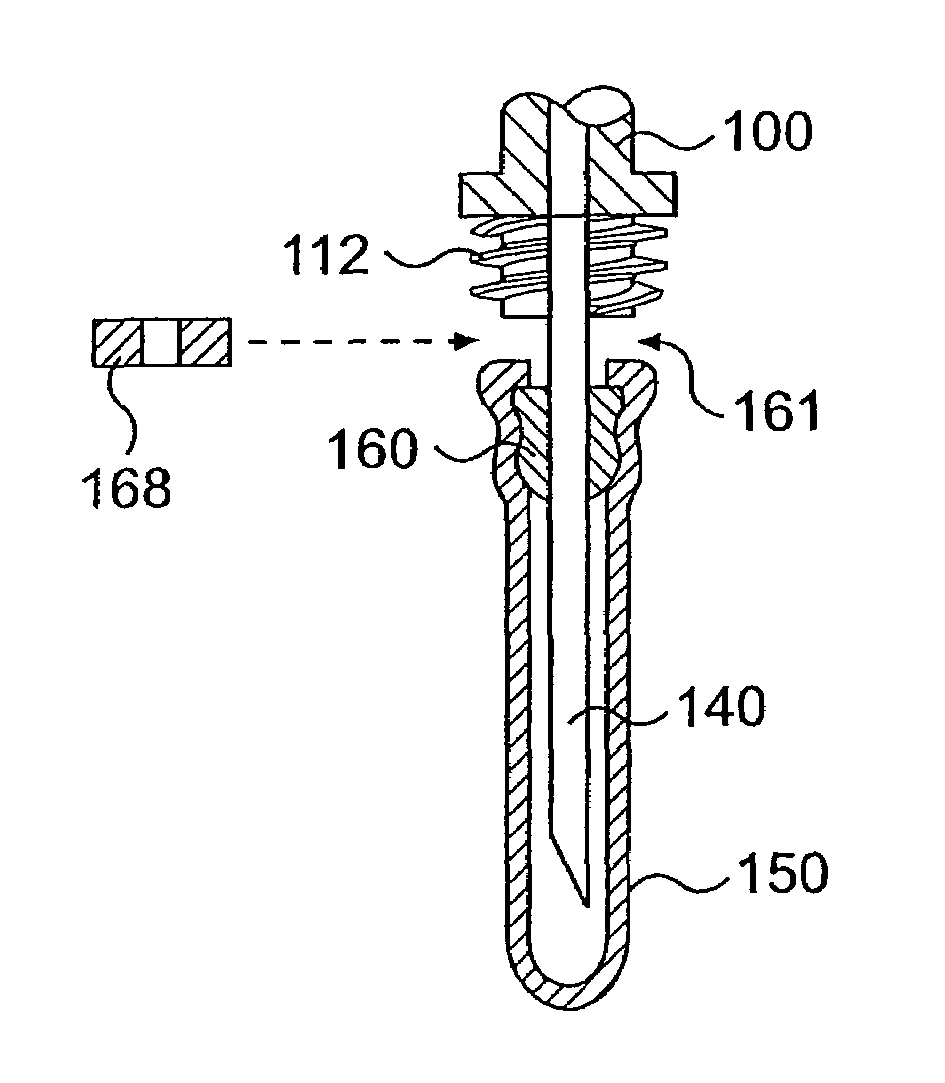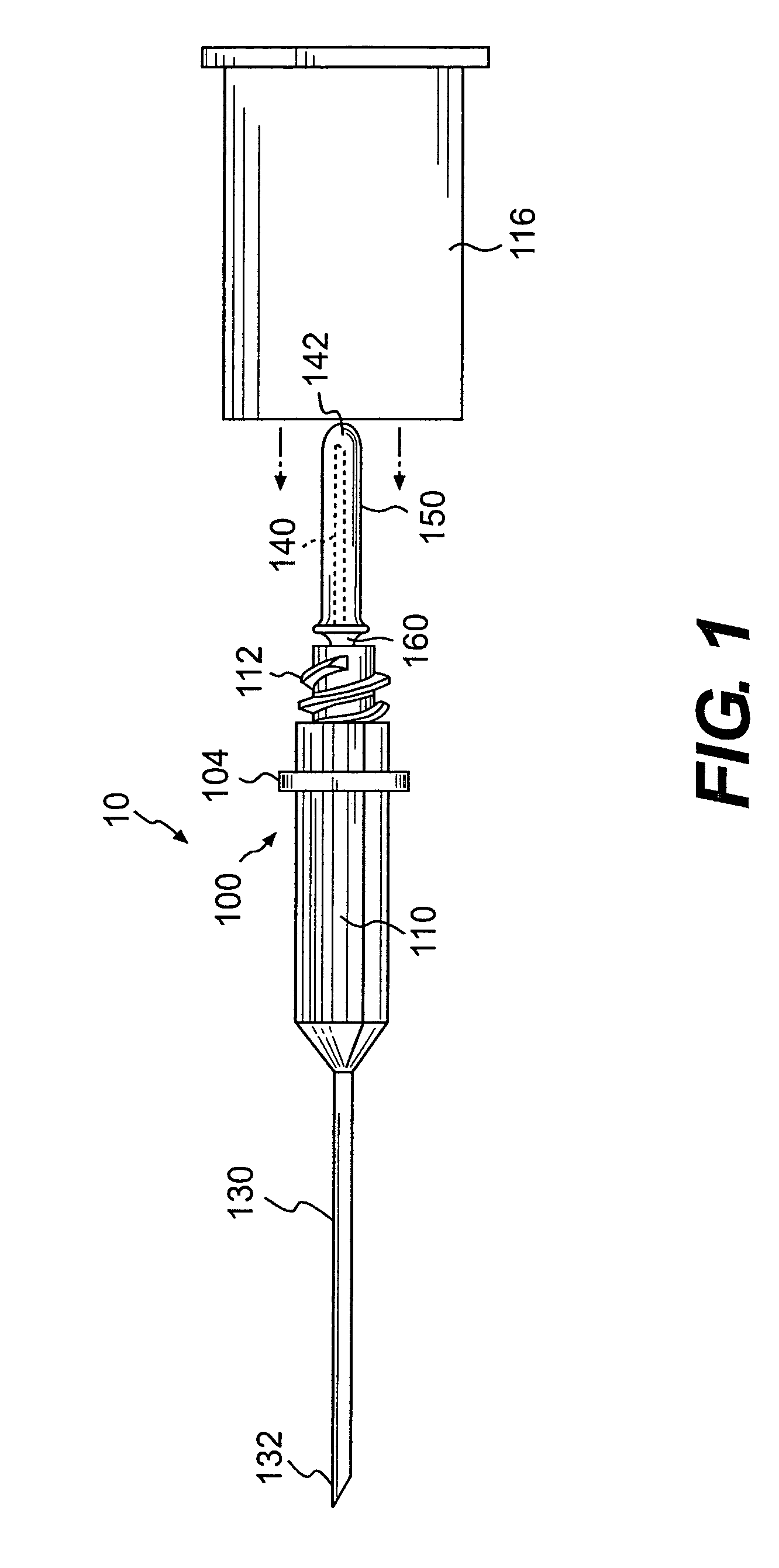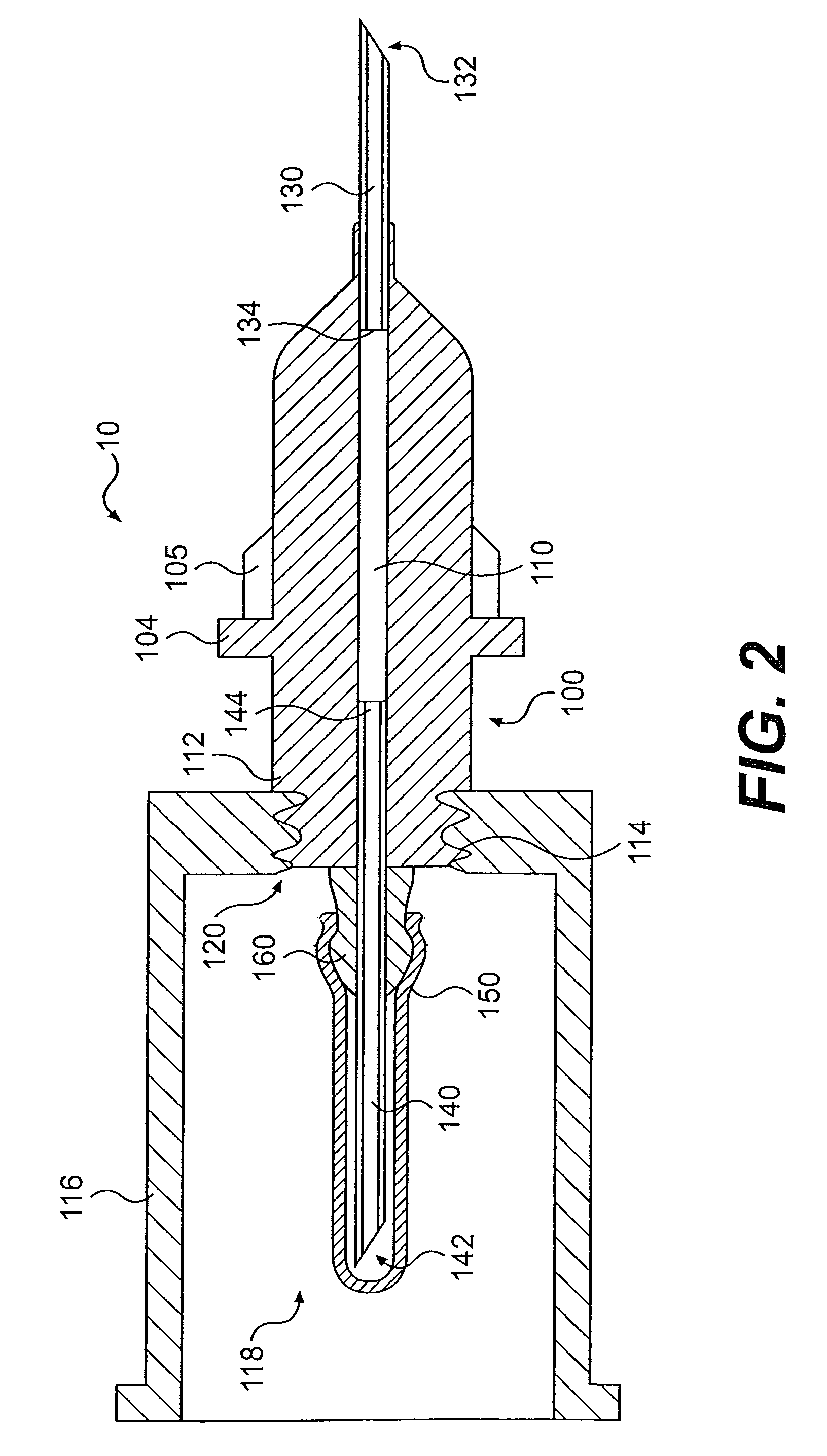Blood drawing device with flash detection
a blood drawing device and flash detection technology, applied in the field of bodily fluid apparatus drawing, can solve the problems of undermining the integrity of the specimen, patient harm additionally, flash detection has been less than satisfactory in many such collection assemblies
- Summary
- Abstract
- Description
- Claims
- Application Information
AI Technical Summary
Benefits of technology
Problems solved by technology
Method used
Image
Examples
first embodiment
[0023]Reference will now be made in detail to the present invention, an example of which is illustrated in the accompanying drawings. With reference to FIG. 1, an exploded pictorial view of a blood-drawing device 10 is shown. The blood-drawing device 10 includes a front cannula 130, a central body 100, a venting member 160, a rear cannula 140, and a flexible sleeve 150. A guide tube 116 may be connected to the central body 100. The front cannula 130 and the rear cannula 140 may each have a generally elongated cylindrical body defining an elongated fluid passage extending from one end of the cannula to the other end. The front cannula 130 may extend from the front end of the central body 100 and terminate at a tapered or pointed end 132, which is adapted to be inserted into a lumen. The rear cannula 140 may extend from the rear of the central body 100 and terminate at a tapered or pointed end 142. The sleeve 150 may isolate the rear cannula 140 from the ambient, wherein the ambient i...
second embodiment
[0034]the present invention is shown in an exploded side view in FIG. 5A. With reference to FIG. 5A, a Luer-type blood-drawing device is provided with a venting member 160. The central body 100 may be provided with an enlarged fluid passage 110 which may improve flash visibility. It is appreciated that the enlarged fluid passage could have any of a number of different shapes and sizes, which may be uniform or non-uniform over the length of the passage. It is further appreciated that the fluid passage 110 in each embodiment of the invention described herein, could have any of a variety of shapes and sizes without departing from the intended scope of the invention.
[0035]The butterfly needle 180 may be connected to the Luer-type hub 102 via a butterfly connection tube 182. The butterfly needle 180 may include a butterfly (i.e., front) cannula 184 and one or more wings 186. The butterfly cannula 184 may be inserted directly into the body lumen for blood collection. Flash may be observed...
third embodiment
[0041]the present invention is shown in FIG. 6. With reference to FIG. 6, a porous member 160 may be inserted over the rear cannula 140 and slightly separated from the rear portion of the central body 100 (i.e., the portion proximate to the rear cannula 140), leaving a small space 161 between the central body and the porous member. The porous member 160, itself, and / or the seal it forms against the rear cannula, may not completely prevent blood from escaping past the porous member. In such instances, the porous member 160 may be constructed of material that is porous to gas (air) and somewhat, but not perfectly, non-porous to blood. The porous member 160 may preferably include a tapered portion, however, it is appreciated that the porous member may have any alternative shape, such as cylindrical, spherical, irregular, or the like, without departing from the intended scope of the invention.
[0042]In embodiments in which the porous member 160 is not completely non-porous to blood, a ga...
PUM
 Login to View More
Login to View More Abstract
Description
Claims
Application Information
 Login to View More
Login to View More - R&D
- Intellectual Property
- Life Sciences
- Materials
- Tech Scout
- Unparalleled Data Quality
- Higher Quality Content
- 60% Fewer Hallucinations
Browse by: Latest US Patents, China's latest patents, Technical Efficacy Thesaurus, Application Domain, Technology Topic, Popular Technical Reports.
© 2025 PatSnap. All rights reserved.Legal|Privacy policy|Modern Slavery Act Transparency Statement|Sitemap|About US| Contact US: help@patsnap.com



